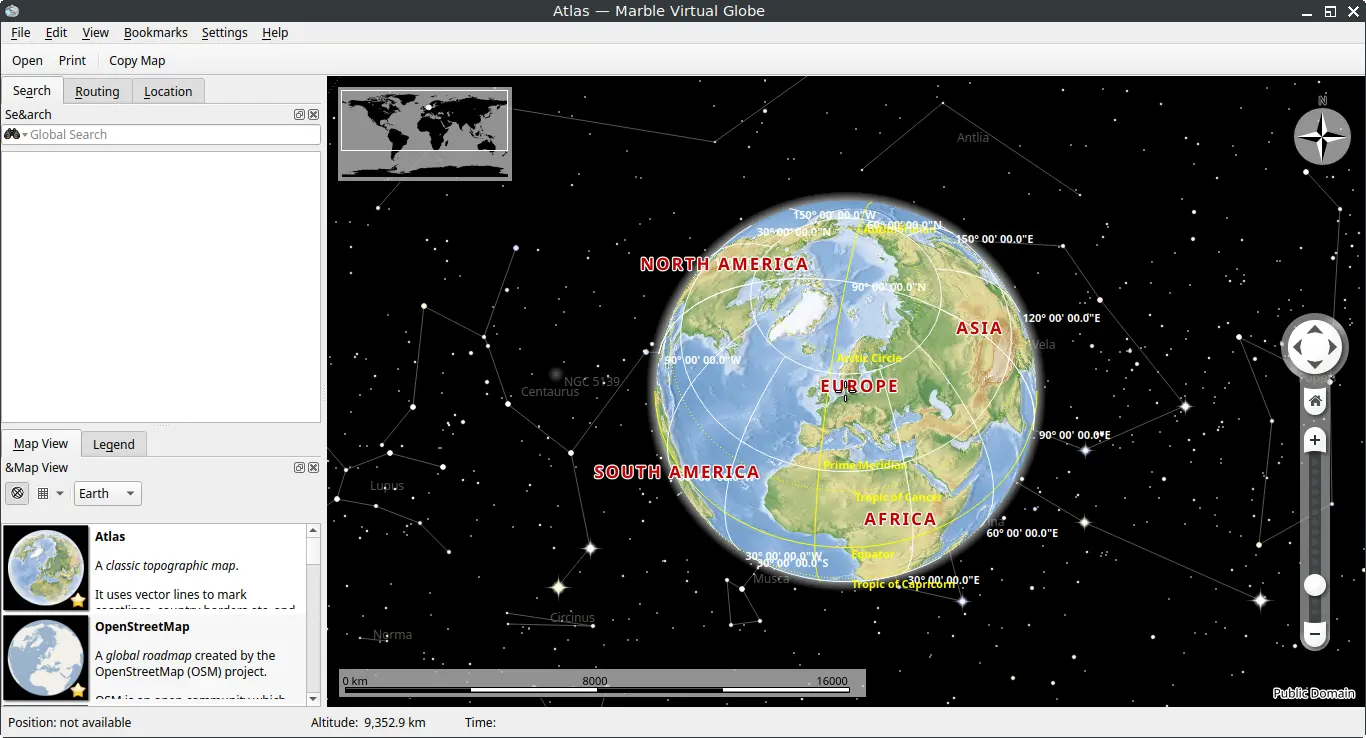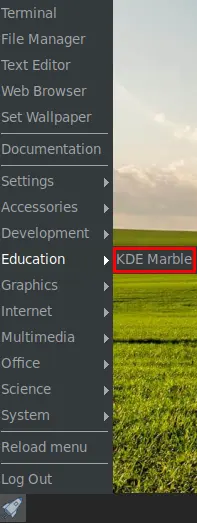What is Marble?
Marble is an open-source virtual globe and world atlas application developed by the KDE community. It’s designed to be a versatile and user-friendly tool for exploring the Earth, other planets, and even stars. Here are some key features and uses of Marble:
- Interactive Maps: Marble provides various interactive maps, including street maps, satellite views, historical maps, and topographic maps. Users can zoom in and out, pan across the globe, and explore different regions in detail.
- Educational Tool: Marble is often used in educational settings to teach geography, astronomy, and Earth sciences. It includes features like annotations, measurement tools, and information layers that enhance learning experiences.
- Customizable: Users can customize Marble by adding their own maps, creating map themes, and configuring the interface to suit their needs. It supports plugins, allowing developers to extend its functionality.
- Offline Use: Marble allows users to download maps for offline use, making it a valuable resource for remote locations or situations where internet access is limited.
- Cross-Platform: Marble is available on multiple platforms, including Linux, Windows, macOS, and Android, ensuring accessibility across different devices.
- Routing and Navigation: Marble includes routing capabilities, allowing users to plan routes and get directions for various modes of transportation, including walking, cycling, and driving.
- 3D Visualization: The application supports 3D visualization of the globe and other celestial bodies, providing an immersive experience for exploring geographic and astronomical features.
- Community-Driven: As part of the KDE project, Marble benefits from contributions by a global community of developers and users who continually improve and update the software.
Marble is a versatile and powerful tool for anyone interested in geography, mapping, and virtual globes.

How to Install Marble on FunOS
To install Marble on FunOS, follow these steps:
Installing from the Ubuntu Repositories
1. Open a Terminal
2. Update the package list:
sudo apt update3. Install Marble:
sudo apt install marble4. Click the menu in the bottom left corner of the screen. Next, click the Reload menu. The objective is to display Marble in the menu.

Launching Marble
After the installation is complete, you can launch Marble from the application menu or by typing marble in the terminal.

How to Uninstall Marble on FunOS
If you decide to uninstall Marble, follow these steps:
1. Open a Terminal
2. Remove Marble:
sudo apt remove --purge marble3. Remove any unused dependencies:
sudo apt autoremove --purge4. Remove user data (optional):
rm -rf $HOME/.local/share/marble
rm -rf $HOME/.config/kde.org5. Click the menu in the bottom left corner of the screen. Next, click the Reload menu. The objective is to remove Marble from the menu.

Conclusion
Marble is a powerful and flexible tool for exploring our planet and beyond. Whether you’re an educator, student, or simply a curious explorer, Marble offers a wealth of features to enhance your understanding of geography and astronomy. Installing and using Marble on FunOS is straightforward, and the software can be easily removed if needed. With its extensive customization options and cross-platform availability, Marble is a valuable addition to your suite of educational and exploratory tools.

Leave a Reply